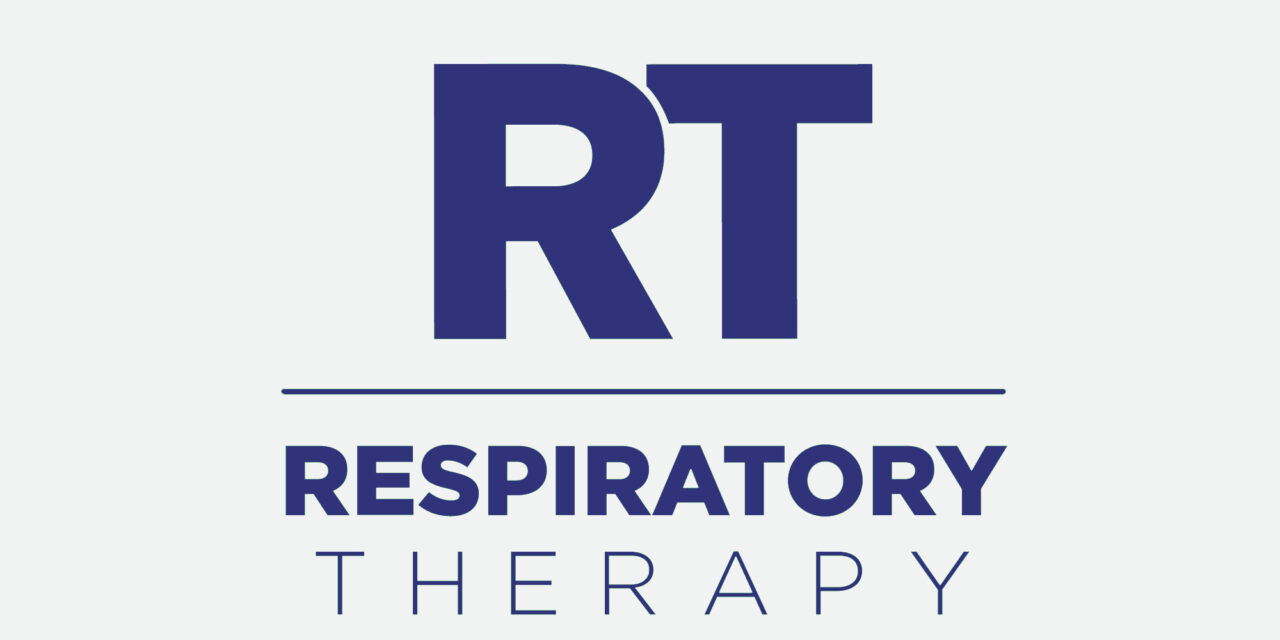Electronic clinical information systems hold the promise of increasing efficiency and decreasing the cost of healthcare.
By Rodger P. Pinto, PhD
When Roche Pharmaceuticals recently recalled one of its hypertension drugs, cardiovascular practices throughout the country were faced with a dilemma: how would they identify patients using the drug from among the thousands of patients they treated and do so in a timely manner? There had already been 24 deaths related to the drug.
For the Indianapolis-based Nasser, Smith & Pinkerton (NSP) Cardiology Group, it meant reviewing 65,000 patient records, says chief operating officer Stephen A. McAdams, MD. Within 30 minutes, however, the practice had a list of patients who used the prescription.
An electronic clinical information system (ECIS) enabled NSP to find the patients quickly — and economically — McAdams says. Looking for patients “the old way” (having employees scan medical records or doing a mass mailing) could have
cost $20,000 to $100,000 and taken up to 2 years to complete, he notes.
“We struggled with whether or not to convert to a clinical information system. The fact that this system … may have saved just one of our patient’s lives tells us we made the right decision,” McAdams says.
The Computer Age
In today’s managed health care environment, there is an increasing demand to reduce costs and increase efficiency. Electronic medical record systems (EMRS) seem to hold the promise of helping clinicians meet this dual goal.
There is a wealth of information on EMRS. In fact, it is almost impossible to pick up a journal on clinical medicine, health care informatics, or practice management nowadays and not find at least one feature story on the subject. This might lead one to believe the tools and technologies for developing and implementing these record-management systems are sophisticated and readily available, but such is far from the case. Selecting the right system remains a complicated matter, with numerous issues to consider, including the impact the system will have on the clinic work flow, system costs, pre-EMRS clinical preparation, and implementation requirements.1
Perspectives on Information Systems
There are basically three major perspectives to consider when choosing an EMRS: clinical, administrative, and research.
In the clinical perspective, benefits of implementing a computer system include greater availability of data; access to more accurate and timely clinical information; increased patient throughput; reduction in the clerical duties of medicine (ie, documentation); and improvement in the quality of patient care through decision support tools such as alerts, reminders, protocol tracking, and the like.
In the administrative perspective, EMRS provides better demographics and insurance plan management, the ability to easily obtain clinical information for authorization requirements, and claims processing that improves billing and coding capabilities, leading to fewer denied claims. Patient tracking, cost accounting, and maximized reimbursement capabilities are also cited
as benefits.
In the research perspective, EMRS allows one to link outcomes with actual treatment data. The ability to institute a protocol for health care providers, track the protocol, and evaluate its effectiveness is an important component in outcomes analysis. As more institutions implement EMRS, reporting the quality of treatment will increasingly become standard operational procedure.
When considering implementing an EMRS, it is imperative to identify the dominant perspective and allow it to drive the evaluation and implementation strategy.
Choosing A System
There are hundreds of systems to choose from, including EMRS, computer patient record systems (CPRS), and ECIS. The following system descriptions are those presented by Mohr:2
- An EMRS is an information system that presents a graphical image of the paper record. These systems deal largely with images of documents, such as a physician’s chart, with some lists that serve navigational purposes and with basic lists of noncodified information.
- A CPRS includes a clinical data dictionary, standard technology, standardized codes and reports, and support for various means of documentation ranging from dictation to self-entry templates, making it more than an electronic version of the paper medical record.
- ECIS is an enterprisewide application that facilitates system integration of clinical information, provides access to information to improve work-flow efficiencies, and allows for the documentation of clinical encounters.
Any system you choose must perform the majority of the tasks needed to run a clinic in order to be fully integrated. For example, there are several steps to process a simple office visit, including:
- patient scheduling and registration;
- the office visit;
- data collection;
- messaging;
- ordering;
- diagnosis;
- treatment, planning, and implementation;
- results reporting;
- documentation;
- billing and collection.
A system that is capable of handling all of the above functions would be most successfully integrated. Because ECIS is the most comprehensive system, it will be the focus of the remainder of this article.
Strategic vs Component Methodology: Pros and Cons
Selecting and implementing an ECIS requires technological, clinical, practice management, and legal knowledge.
Practices that use a strategic methodology usually want to develop standardized protocols that must be monitored and managed at the point of service. Being able to track patient flow allows these providers to develop cost models that more accurately identify their true cost of business. The ability to get the proper information to the medical personnel who need it also allows for quicker and better medical decisions. If a strategic approach is used, ECIS becomes, by default, the dominant enterprise application. A component strategy seeks to solve a single problem–for example, eliminating transcription to allow for the easy retrieval of archival documents and more efficient handling of prescription calls or laboratory
callbacks.
The chosen methodology–strategic or component–will drive all decisions in implementing an ECIS. Be forewarned, however, that the strategic approach is not for the faint of heart. Cost is considerably greater since you are starting from scratch. Because the integration of an ECIS can be very complex and costly, many institutions have opted for the component approach. In the short term, this approach is cheaper and easier to implement, and provides faster results. Ultimately, however, it will not produce the same payoff in terms of efficiency as a strategic approach will. This article approaches ECIS from a strategic methodology and provides a process to integrate an ECIS into a practice.
Choosing An ECIS
The first step in selecting an ECIS is assessing how much the conversion will cost and how long it will take. To make these determinations, a baseline study of current computer capabilities and needs must be conducted. This is usually done by the vendor. This is best accomplished through a structured site visit. A structured questionnaire can be used to streamline the process, but there are several goals that can be accomplished only through a hands-on site visit.
During the site visit, a technological assessment should be made. This would involve charting local area networking capability, cabling readiness, availability of outlets, and the like. The facility’s physical layout, desktops, and radio frequency access points are other issues that should be evaluated. During the visit, the staff’s computer literacy should also be evaluated with questionnaires or personal interviews. In one site visit, it was discovered that 76 percent of the clinical staff (physicians, nurses, and technicians) did not have any personal computer experience. This meant a basic computer-training strategy was vital to the success of ECIS implementation. The second area to evaluate is the clinical functions performed at the facility. Patient registration, scheduling, and check- in and checkout are all important areas to evaluate. Learning about existing problems that compromise efficiency is very important. During one site evaluation, it was discovered that it took the staff eight to 12 steps to refill a prescription over the phone. The average cost of personnel time to refill these prescriptions was calculated at approximately $8.40 per call. This practice averaged more than 260 calls a day, representing an average of $47,000 a month–a huge expense. There are no mechanisms to recoup this cost either, as prescription refilling is not considered a billable procedure. In this case, the ECIS was designed to reduce this cost significantly. Instead of eight to 12 steps, the refilling process has been reduced to two to four steps. Once all the paper medical records have been converted, the cost will be approximately $2 a call.
The third area to evaluate is the medical records department. A thorough knowledge of how this department functions is vital to the success of any ECIS. Some typical questions would include:
- How Is Filing Done?
- What problems does the staff have in maintaining external paper flow?
- What method will be chosen to convert the paper charts into an ECIS?
- Will there be a complete conversion of all information and records? (Paper medical records conversion, in terms of how much information there is to be converted or when and if the paper chart can truly be eliminated, is currently a highly debated issue, for which there does not seem to be a universal answer.)
- Will an abstract of the information be entered into the electronic version?
- What is the time line for completing this project?
Answering these questions is necessary to estimate the costs of conversion and time frame for ECIS implementation. Other costs to consider include:1
- Software licenses, typically sold on a per-workstation basis.
- Hardware, consisting of individual personal computers for both the office and exam rooms, central database servers, network hardware, and modems.
- Training and implementation, which involves preinstallation planning and on-site training of users.
- Software support, usually an annual contract typically sold as a percentage of the total sale.
- Hardware and network support, which is primarily on-site, or telephone support for hardware-specific issues and problems. Typically, costs of implementing a system range from $15,000 to $30,000 per practitioner.1
The fourth area to review is the current business office functions. A thorough knowledge of the strengths and weaknesses of the business office is imperative as the ECIS will provide all of the billing information (demographics, insurance, and encounter level of service). Questions to ask might include:
- What problems is the business office having in getting the proper ICD (International Classification of Diseases) or CPT (Current Procedural Terminology) codes?
- What items are they consistently not capturing properly?
- What is the denial rate of claims?
Finally, the clinical encounter process must be reviewed. If a strategic approach is going to be successful, physicians must use the computer in their assessment and treatment process. If the provider does not use the computer but, rather, relegates this task to a nurse or a medical assistant, the ability to implement and manage protocols becomes relegated to reporting after the fact whether or not the protocol was followed, making specific cost-analysis impossible to perform. Again, the administration would be left with analyzing costs by using some estimated rate such as relative value units. If an ECIS is to be successful, it is imperative to identify ways that it can make physicians more efficient in performing their duties.
Implementing An ECIS
If an ECIS is going to be implemented, all future choices must be based on this decision. Whether an institution will be able to keep the current practice management, scheduling, or patient registration system will be determined by whether they are compatible with the ECIS. Providers often have significant investments in existing systems and, wherever possible, want to preserve these investments. Doing so, however, presents its own set of costs as upgrading these systems frequently requires custom-built interfaces. To ensure the entire system will work properly when the upgrade is implemented, the interfaces have to be evaluated, usually in a test lab, resulting in higher maintenance and support costs.
The second level of integration involves the clinical process. Installing an ECIS allows a practice to reinvent how it does business. Allowing access to clinical information and clinical tools to anyone who needs them opens up a wealth of opportunities. A physician who has access to his/her scheduling book can instantly schedule a patient’s next appointment. Nurses who have information on a patient’s prescription and have refills authorized can refill prescriptions on the spot following the accepted protocols of the practice. Pathways or protocols could be inserted that allow physician assistants or nurse practitioners to be more involved in patient care, and the physician could have access to evaluate and oversee their work in “real time.” Intranet or Internet browsers could also be attached to the system, allowing instant access to medical references and patient information materials. The physician’s diagnosis, treatment, documentation, and billing could all be integrated in a way that is not possible with existing systems.
Return On Investment
Significant cash outlay must be evaluated in terms of what the return on investment (ROI) will be. ROI means, at a minimum, that the system pay for itself over a predetermined time. It is easy to determine the ROI when you are deciding whether to sign up for a support maintenance agreement if you have a history of repairs, breaks, and fixes on the equipment. When entering an area in its infancy, such as ECIS, however, it is much more difficult. In addition, there have been only limited attempts to develop a model based on existing paper records to apply to an ECIS. This is a dangerous approach as an ECIS is more than just a paper medical record.
One method that has been offered to develop ROI for an ECIS is the manufacturing model. Identifying steps in a process, such as those involved in refilling a prescription, allows the specific tasks and the personnel assigned to do the tasks to be listed. This, in turn, allows costs-per-job to be developed.
Selecting a Vendor
Because the ECIS field is new, many companies are still testing the waters, and many clinics find that they unwittingly have become the testing ground for new ECIS software.1 When implementing an ECIS, it is therefore important to try to find a company with a proven track record. This can be done by contacting other institutions that have integrated an ECIS, visiting these institutions, and basically asking a lot of questions.
Also important to remember is that an ECIS consists of hardware, data communications, local and wide area networks, and software applications. Finding one vendor who handles all of these components may be difficult. For small groups, the application vendor may recommend other vendors to use. Larger groups may require a consultant to help integrate an ECIS into the existing information system. One invaluable vendor source is the HCP Directory. When comparing prices among vendors, one must make sure each vendor is offering comparable features.1
Conclusion
We are at the beginning of the information age of medicine, and ECIS are of intense interest. Over the next several years, there will be a wealth of component and strategic approaches to ECIS development. When choosing a system, it is important to take a global approach and consider the needs of clinicians, administrators, and researchers. It is also important to remember when you purchase an ECIS, you are not only buying the system, but you are also buying the company that backs it.1 Keeping these factors in mind will ensure a selection that meets the dual goals of increasing efficiency and reducing costs.
RT
Rodger P. Pinto, PhD, is chief executive officer of Gateway Electronic Medical Management Systems, LLC, in Indianapolis, and a member of Healthcare Information and Management Systems Society.
References
1. Ury A. Choosing the right electronic medical records system. Cost & Quality. March 1998;4-6.
2. Mohr D. Benefits of an electronic clinical information system. Healthcare Informatics. 1997;11:49-58.










